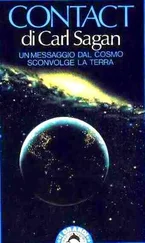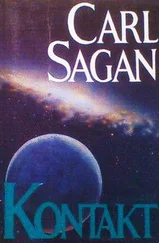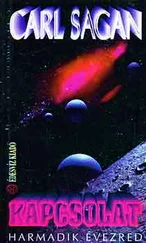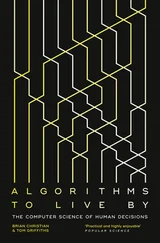Carl Sagan - Broca's Brain - The Romance of Science
Здесь есть возможность читать онлайн «Carl Sagan - Broca's Brain - The Romance of Science» весь текст электронной книги совершенно бесплатно (целиком полную версию без сокращений). В некоторых случаях можно слушать аудио, скачать через торрент в формате fb2 и присутствует краткое содержание. Жанр: Физика, на английском языке. Описание произведения, (предисловие) а так же отзывы посетителей доступны на портале библиотеки ЛибКат.
- Название:Broca's Brain: The Romance of Science
- Автор:
- Жанр:
- Год:неизвестен
- ISBN:нет данных
- Рейтинг книги:3 / 5. Голосов: 1
-
Избранное:Добавить в избранное
- Отзывы:
-
Ваша оценка:
- 60
- 1
- 2
- 3
- 4
- 5
Broca's Brain: The Romance of Science: краткое содержание, описание и аннотация
Предлагаем к чтению аннотацию, описание, краткое содержание или предисловие (зависит от того, что написал сам автор книги «Broca's Brain: The Romance of Science»). Если вы не нашли необходимую информацию о книге — напишите в комментариях, мы постараемся отыскать её.
Broca's Brain: The Romance of Science — читать онлайн бесплатно полную книгу (весь текст) целиком
Ниже представлен текст книги, разбитый по страницам. Система сохранения места последней прочитанной страницы, позволяет с удобством читать онлайн бесплатно книгу «Broca's Brain: The Romance of Science», без необходимости каждый раз заново искать на чём Вы остановились. Поставьте закладку, и сможете в любой момент перейти на страницу, на которой закончили чтение.
Интервал:
Закладка:
A detailed study of the possible causes of such major climatic changes on Mars has laid stress on a feedback mechanism known as advective instability. The Martian atmosphere is composed primarily of carbon dioxide. There seem to be large repositories of frozen CO 2in at least one of the two polar caps. The pressure of CO 2in the Martian atmosphere is quite close to the pressure of CO 2expected in equilibrium with frozen carbon dioxide at the temperature of the cold Martian pole. This is a situation quite similar to the pressure in a laboratory vacuum system determined by the temperature of a “cold finger” in the system. At the present time the Martian atmosphere is so thin that hot air, rising from the equator and settling at the poles, plays a very small role in heating the high latitudes. But let us imagine that the temperature in the polar regions is somehow slightly increased. The total atmospheric pressure increases, the efficiency of heat transport by advection from equator to pole also increases, polar temperatures increase still further, and we see the possibility of a runaway to high temperatures. Likewise a decrease in temperature, from whatever cause, could bring about a runaway toward a lower temperature. The physics of this Martian situation is easier to work out than the comparable case on Earth, because on Earth the major atmospheric constituents, oxygen and nitrogen, are not condensable at the poles.
For a major increase in pressure to occur on Mars, the amount of heat absorbed in the polar regions of the planet must be increased by some 15 or 20 percent for a period of at least a century. Three possible sources of variation in the heating of the cap have been identified, and they are, interestingly enough, very similar to the three fashionable models of terrestrial climatic change discussed above. In the first, variations of the tilt of the Martian rotational axis toward the Sun are invoked. Such variations are much more striking than for the Earth, because Mars is close to Jupiter, the most massive planet in the solar system, and the gravitational perturbations by Jupiter are pronounced. Here variations in global pressure and temperature will occur on hundred thousand to million year time scales.
Secondly, a variation in the albedo of the polar regions can cause major climatic variations. We can already see substantial sand and dust storms on Mars, because of which the polar caps seasonally darken and brighten. There has been one suggestion that the climate of Mars may be made more hospitable if a hardy species of polar plant can be developed that will lower the albedo of the Martian polar regions.
Finally, there is the possibility of variations in the luminosity of the Sun. Some of the channels on Mars have an occasional impact crater in them, and crude dating of the channels from the frequency of impacts from interplanetary space shows that some of them must be about a billion years old. This is reminiscent of the last epoch of high global temperatures on the planet Earth and raises the captivating possibility of synchronous major variations in climate between the Earth and Mars.
The subsequent Viking missions to Mars have increased our knowledge about the channels in a major way, have provided quite independent evidence for a dense earlier atmosphere and have demonstrated a great repository of frozen carbon dioxide in the polar ice. When the Viking results are fully assimilated, they promise to add greatly to our knowledge of the present environment as well as the past history of the planet, and of the comparison between the climates of the Earth and Mars.
When scientists are faced with extremely difficult theoretical problems, there is always the possibility of performing experiments. In studies of the climate of an entire planet, however, experiments are expensive and difficult to perform, and have potentially awkward social consequences. By the greatest good fortune, nature has come to our aid by providing us with nearby planets with significantly different climates and significantly different physical variables. Perhaps the sharpest test of theories of climatology is that they be able to explain the climates of all the nearby planets, Earth, Mars and Venus. Insights gained from the study of one planet will inevitably aid the study of the others. Comparative planetary climatology appears to be a discipline, just in the process of birth, with major intellectual interest and practical applications.
CHAPTER 15

We imagine them
flitting
cheek to jowl,
these driftrocks
of cosmic ash
thousandfold afloat
between Jupiter and Mars.
Frigga,
Fanny,
Adelheid
Lacrimosa.
Names to conjure with,
Dakotan black hills,
a light-opera
staged on a barrier reef.
And swarm they may have,
crumbly as blue-cheese,
that ur-moment
when the solar system
broke wind.
But now
they lumber
so wide apart
from each
to its neighbor’s
pinprick-glow
slant millions
and millions
of watertight miles.
Only in the longest view
do they graze
like one herd
on a breathless tundra.
DIANE ACKERMAN,
The Planets (New York, Morrow, 1976)
ONE OF THE seven wonders of the ancient world was the Temple of Diana at Ephesus, in Asia Minor, an exquisite example of Greek monumental architecture. The Holy of Holies in this temple was a great black rock, probably metallic, that had fallen from the skies, a sign from the gods, perhaps an arrowhead shot from the crescent moon, the symbol of Diana the Huntress.
Not many centuries later-perhaps even at the same time-another great black rock, according to the belief of many, fell out of the sky onto the Arabian Peninsula. There, in pre-Islamic times, it was emplaced in a Meccan temple, the Kaaba, and offered something akin to worship. Then, in the seventh and eight centuries A.D., came the stunning success of Islam, founded by Muhammed, who lived out most of his days not far from this large dark stone, the presence of which might conceivably have influenced his choice of career. The earlier worship of the stone was incorporated into Islam, and today a principal focus of every pilgrimage to Mecca is that same stone-often called the Kaaba after the temple that enshrines it. (All religions have shamelessly coopted their predecessors-e.g., consider the Christian festival of Easter, where the ancient fertility rites of the spring equinox are today cunningly disguised as eggs and baby animals. Indeed the very name Easter is, according to some etymologies, a corruption of the name of the great Near Eastern Earth mother goddess, Astarte. The Diana of Ephesus is a later and Hellenized version of Astarte and Cybelle.)
In primitive times, a great boulder falling out of a clear blue sky must have provided onlookers with a memorable experience. But it had a greater importance: at the dawn of metallurgy, iron from the skies was, in many parts of the world, the purest available form of this metal. The military significance of iron swords and the agricultural significance of iron plowshares made metal from the sky a concern of practical men.
Rocks still fall from the skies; farmers still occasionally break their plows on them; museums still pay a bounty for them; and, very rarely, one falls through the eaves of a house, narrowly missing a family in its evening hypnogogic ritual before the television set. We call these objects meteorites. But naming them is not the same as understanding them. Where, in fact, do meteorites come from?
Between the orbits of Mars and Jupiter are thousands of irregularly shaped, tumbling little worlds called asteroids or planetoids. “Asteroid” is not a good term for them because they are not like stars. “Planetoid” is much better because they are like planets, only smaller, but “asteroid” is the more widely used term by far. Ceres, the first asteroid to be found, was discovered [11]telescopically on January 1, 1801-an auspicious finding on the first day of the nineteenth century-by G. Piazzi, an Italian monk. Ceres is about 1,000 kilometers in diameter and is by far the largest asteroid. (By comparison, the diameter of the Moon is 3,464 kilometers.) Since then, more than two thousand asteroids have been discovered. Asteroids are given a number indicating their order of discovery. But following Piazzi’s lead, a great effort was also made to give them names-female names, preferably from Greek mythology. However, two thousand asteroids is a great many, and the nomenclature becomes a little ragged toward the end. We find 1 Ceres, 2 Pallas, 3 Juno, 4 Vesta, 16 Psyche, 22 Kalliope, 34 Circe, 55 Pandora, 80 Sappho, 232 Russia, 324 Bamberga, 433 Eros, 710 Gertrud, 739 Mandeville, 747 Winchester, 904 Rockefelleria, 916 America, 1121 Natasha, 1224 Fantasia, 1279 Uganda, 1556 Icarus, 1620 Geographos, 1685 Toro, and 694 Ekard (Drake [University] spelled backwards). 1984 Orwell is, unfortunately, a lost opportunity.
Читать дальшеИнтервал:
Закладка:
Похожие книги на «Broca's Brain: The Romance of Science»
Представляем Вашему вниманию похожие книги на «Broca's Brain: The Romance of Science» списком для выбора. Мы отобрали схожую по названию и смыслу литературу в надежде предоставить читателям больше вариантов отыскать новые, интересные, ещё непрочитанные произведения.
Обсуждение, отзывы о книге «Broca's Brain: The Romance of Science» и просто собственные мнения читателей. Оставьте ваши комментарии, напишите, что Вы думаете о произведении, его смысле или главных героях. Укажите что конкретно понравилось, а что нет, и почему Вы так считаете.











